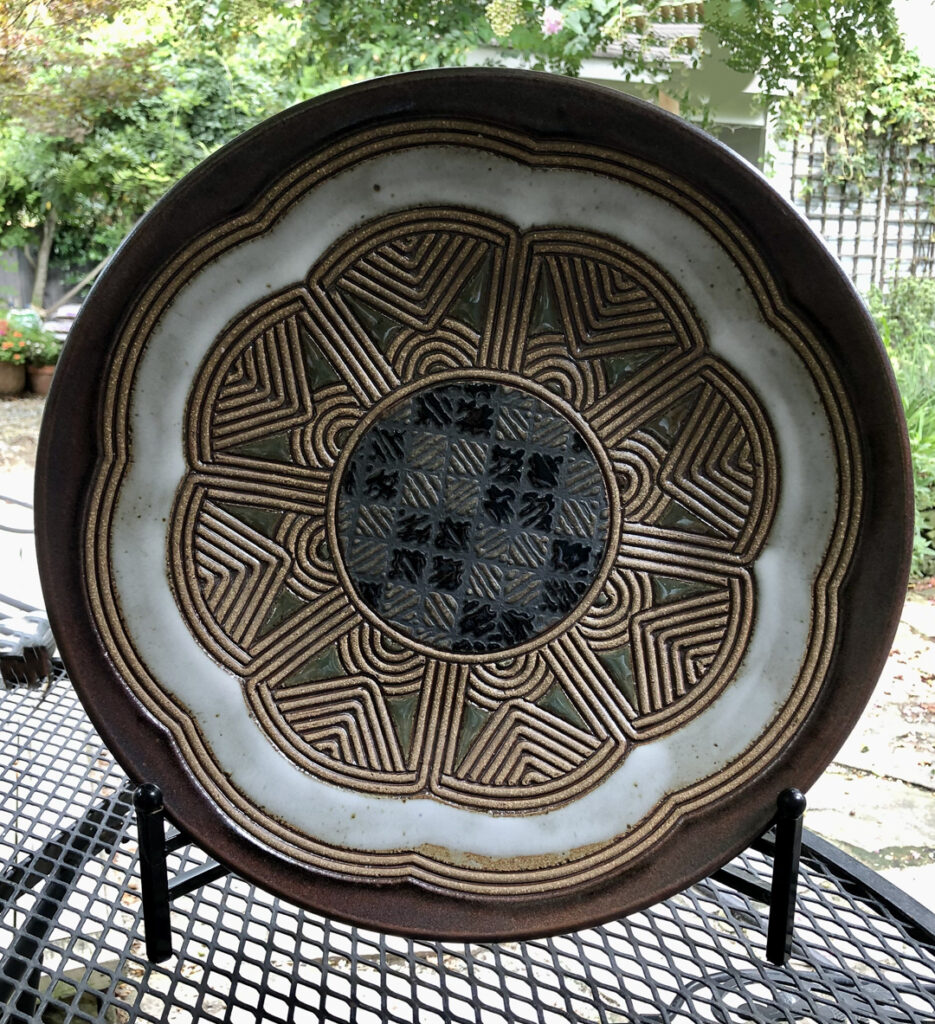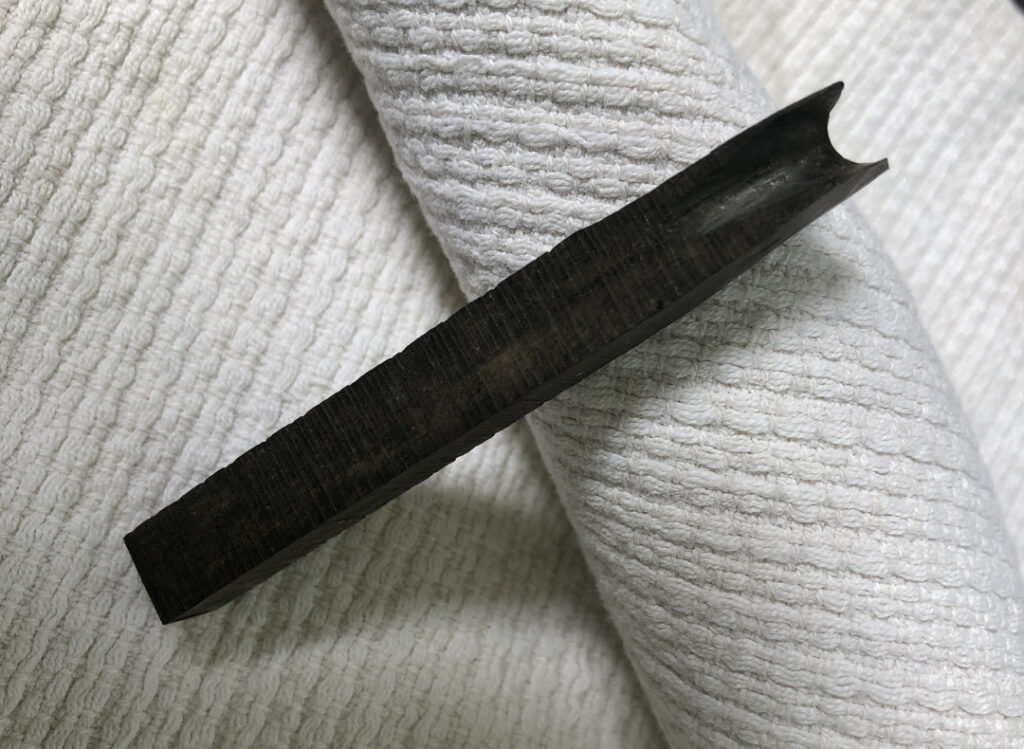Curtis Benzle argues for the need to appreciate the work of the hand in a digital age
“Touch”, by itself, has never been enough to define significant accomplishment in creative ceramics. “Skillful touch” however, has historically been a core principle in the complex, ceramic aesthetic and a hallmark of exceptional quality and value. Unfortunately, as the lure of technology and engineering prowess beckons, clay artists, curators, collectors, and critics have failed to convincingly define and defend a traditional clay art aesthetic. Not to suggest the omission of technological progress, but certainly human touch should retain a critical role in this definition. The steady deterioration of appreciation for touch as an artistic element is subtle, but evermore omnipresent. How rarely now do we hear reference to a clay artist’s “skillful touch”, as opposed to the more persistent reference to social relevance? As if clay has been curiously transformed into a primarily effective tool for sociological transformation or political persuasion? While it is difficult to critically address “skill” as a core aesthetic, especially when immersed in a popular culture fixated on self-infatuation, the importance of an inclusive and comprehensive clay aesthetic that includes touch has not diminished—only our willingness or ability to accurately and honestly define it.
I recently experienced David McDonald demonstrate his impeccable technique at the Mississippi Clay Conference. It was an event small enough to allow for individual interaction with the artist and realize an up-close appreciation of their movement and marks. David’s integration of traditional African patterning, informed by an intensely personal interpretation, was inspirational and honest. While using a potter’s wheel to form the substrate for his decoration, he proceeded to use only his hands and a simple, ebony contouring tool (of his own making) to control the shape and dimension of his linear decoration.
Watching David work, I was taken back some forty years to an equally engaging demonstration by Nigerian artist, Ladi Kwali. While she formed and decorated her traditional pottery, Ms Kwali was asked about the social significance of her decoration. She indicated there was not much: she mostly repeated what her mother and grandmother had taught her. Pressed further by an MFA-infested audience, she did admit that on occasion she would subtly modify a design to suit her personal taste, but it was skill and respect for tradition that mattered most.
My reaction to both artists was that the core principle guiding their work is a synthesis of incredibly skillful touch, in service to the inspiration and intentional respect for tradition. That this principle is modified and moved forward by a deep personal perspective provides the impetus to transcend repetition and create art.
Shortly after experiencing David McDonald’s demonstration, I came across a review of Mark Goudy’s work in the September 2023 issue of Ceramics Monthly. I admire Mark and his work and especially appreciate his use of appropriate technology to express his very personal aesthetic. However, the article I was reading was not written by Mark, but about Mark and therein lies my dilemma as it relates to “Touch”.
Writing in June 2023 for Studio Potter, Mark related his attraction to clay; “the draw for me with ceramics was to turn completely away from the virtual digital world and simply create objects with my hands. After a twenty-year career as a digital hardware logic designer, I found hand-building unique, organic forms in clay to be a captivating and cathartic experience”. Mark continues to state that later, using digital 3D CAD software to design forms, 3D printing mother molds, and then creating plaster slip-casting molds from these 3D prints, he could “create shapes and forms I could envision in my mind’s eye but could never build directly by hand”.
In what is a disservice to Mark’s very honestly described utilization of appropriate technology (in this case, commercial software and 3-D printing), to create an incredible body of work, the article’s author was seemingly unable to avoid a very confusing linkage between marks made by a 3-D printer and the human touch that is so intimately linked with traditional ceramic expression. Her reference to evidence of the artist’s, “proficient hand skills” contradicts Mark’s own observation that his current work could not be created by hand. Subtle and seemingly insignificant, this confusing commentary exemplifies the misrepresentation that threatens a thorough understanding and appreciation of the traditional ceramic aesthetic, including and especially “touch”.
In the same vein, an article covering the work of Niko Conte in the February 2021 Ceramic Review, reveals a similar confusion between the writer’s reference to touch in contradiction to the artist’s own stated interest in machine-generated creation. While Mr. Conte references his fascination with using a machine to create something that, “hasn’t existed yet”, the author draws an awkward parallel with the organic patterns in handmade, lace filigree. More confusing still is the author’s reference to a production process that entails, “hundreds of painstakingly intricate layers”, thus humanizing a mechanical operation that is not particularly painstaking to a machine.
My concern, in either case, is certainly not with the introduction of new ceramic technologies, as I have used such technology in my own studio to, as Mark Goudy says, “Do things that the human hand either may not do or find incredibly difficult”. But an inaccurate misrepresentation of these technologies that confuses machine-aided production and human touch undermines a significant ceramic aesthetic and the full appreciation of ceramic’s unique contribution to the art world.
We can certainly celebrate and benefit from the insightful incorporation of new, appropriate technologies, as is so evident in the work of significant artists like Mark Gaudy and Nico Conti. But at the same time, we must hold our critics, curators and collectors to a higher standard to accurately define and, as necessary, defend the complex aesthetic that has always been essential to the accurate appreciation of significant ceramic art. New forms of creative expression should never engender confusion between the amazing capacity of modern manufacturing and the magnificence of skillful, human touch.
About Curtis Benzle
Curtis Benzle’s signature artworks are translucent, porcelain sculpture and architectural lighting. He is represented in major museums and collections around the world, including the Metropolitan Museum of Art, NYC; Smithsonian, Washington DC; Los Angeles County Museum of Art, Montreal Museum of Art, Seto(Japan) Cultural Center; The Everson Museum, Syracuse, NY, Cleveland(Ohio) Museum of Art, and the White House Collection. Curtis received his B.F.A. from the Ohio State University, MA from Northern Illinois University and apprenticed in pottery with Robert Eckels. He is Professor Emeritus at the Columbus College of Art and Design (Columbus, Ohio) and has taught over sixty workshops throughout the world. His most recent workshops were at La Meridiana, Tuscany, Italy and the Pottery Gym, Madrid Spain Curtis is included in over twenty-five books on contemporary ceramics, including; “Lithophanes”, Margaret Carney, “Masters: Porcelain”, Richard Burkett, “Clay in Art”, Kostas Tarkasis, “Ceramic Form”, Peter Lane, “Making Marks” & “Clay and Glazes for the Potter”, Robin Hopper and “Art That Works”, Lloyd Herman. Curtis is a former Trustee of the American Craft Council, past Executive Director of Ohio Designer Craftsmen, served on the Board of the Craft Emergency Relief Fund(CERF) and is the past-president of the Alabama Visual Arts Network where he continues to promote learning and career success for all studio artists. Curtis is a member of the International Academy of Ceramics. Visit Benzleporcelain.com



